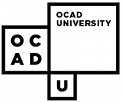The Instructional Environment:
Optimizing Access to Web-Based Learning Resources
Laurie Harrison
Adaptive Technology Resource Centre
University of Toronto
Presentation Notes:
http://snow.utoronto.ca/access/ud
The Universal Design Opportunity:
- Shift has occurred in the design of information technology as transformability is now being mainstreamed to enable a multi-modality architecture
Varied Demands:
- Transformability
- user preferences (hardware and software)
- institutional preferences (evolving delivery systems)
- Usability
- translateability
- indexibility
- re-purposing learning objects
Challenges in Universal Design:
- obtaining an overview and determining the structure of the material
- orienting and moving to desired sections of the information or interface
- obtaining translations of graphically / aurally presented information
General Principles: Multi- Modality
- Web as an information medium, not a visual medium
- Facilitate alternative rendering of content (ie auditory & visual)
- Accommodate user preferences for access
Some Examples:
- Web as an information medium, not a visual medium:
Cascading Style Sheets
- 2. Alternative rendering:
- Allows rendering in varied modalities, depending on user preferences
- Captioning, Descriptive Video, Languages
Multimedia using SMIL and Real G2 Player
- 3. Accommodating User Preferences:
- A before and after look at a courseware interface, modified for accessibility enhancement
WebCT: A Case Study...
| Inaccessible Course Home Page | Accessible Course Home Page |
|
|
Web based learning on the rise...
- dramatically increasing number of Web-based courses
- spurred a growing industry of "courseware" tools to assist educators
- courseware also used to complement traditional lecture-based programs
Examples:
- WebCT, TopClass, CourseInfo, Virtual-U, Lotus Learning Space, Web Course in a Box
- framework for curriculum, utilities and class management tasks
- assembles Web pages created by instructor - into an organized framework
- step-by-step guides create components - course home page, bulletin boards, quizzes
Potential...
- courseware platforms could easily facilitate access to education for students with disabilities
- ironically, very few have included basic accessibility considerations
Trends
- Courseware developers are now scrambling to improve accessibility
- Rehab Act compliance, ADA pressure
- New versions showing improvements:
- WebCT
- CourseInfo
Useful Design Strategies
- Intuitive, logical, consistent structure
- Navigation / location information
- Resource overviews
- Options for more or less detail
- Context sensitive help
Best Practices
- Use non-proprietary formats (open standards such as SMIL, HTML…)
- Provide standards, guidelines and templates
- Provide combination support in instructional design / accessible design to instructors/faculty
What about PDF files?
- Graphics and complex layouts can be problematic
- Navigability depends on how it was created
Validation
Automated validation is available using the following tools: 1. BOBBY Online Validation (CAST)
- Bobby is a web-based public service offered by CAST that analyzes web pages for their accessibility to people with disabilities as well as their compatibility with various browsers. The analysis of accessibility is based on the W3C's WAI Page Author Guidelines. http://www.cast.org/bobby
Validation
Automated validation is available using the following tools: 1. BOBBY Online Validation (CAST)
- Bobby is a web-based public service offered by CAST that analyzes web pages for their accessibility to people with disabilities as well as their compatibility with various browsers. The analysis of accessibility is based on the W3C's WAI Page Author Guidelines. http://www.cast.org/bobby
Validation
Automated validation is available using the following tools: 1. BOBBY Online Validation (CAST)
- Bobby is a web-based public service offered by CAST that analyzes web pages for their accessibility to people with disabilities as well as their compatibility with various browsers. The analysis of accessibility is based on the W3C's WAI Page Author Guidelines. http://www.cast.org/bobby
The Accessibility Challenge
- The need for a more transformable and usable Internet, increasing accessibility for all users, will be a driving force in the shaping of the future development of learning resources on the Web.

